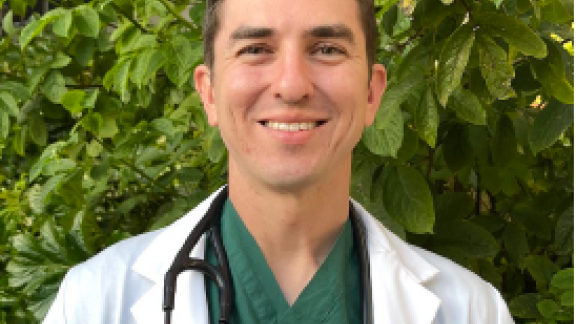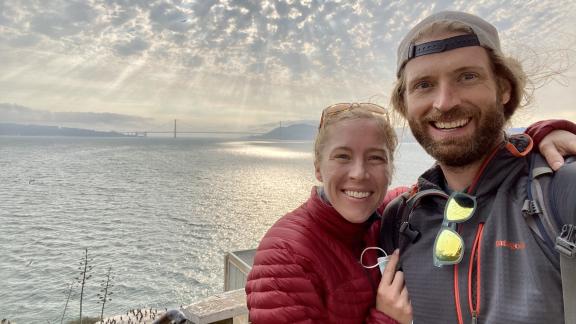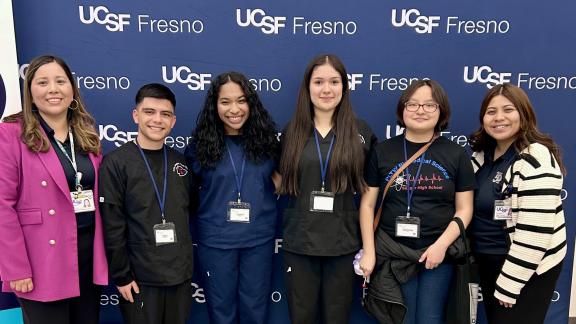For years, parents have taken their children to sleep clinics for answers as to why their sons and daughters are sleepy during the day, when by all appearances they fall asleep quickly at bedtime and sleep until the morning.
The only difference these parents observed in their children’s sleep was a pronounced twisting and turning throughout the night.
“Parents would say, ‘he sleeps like a helicopter, or he sleeps like a fish, moving all over,’” says Lourdes DelRosso, MD, PhD, MS, a UCSF Fresno pediatric sleep specialist, program director of the UCSF Fresno Sleep Medicine Fellowship and UCSF professor of Family and Community Medicine.
It was parental descriptions of children’s sleep behavior that prompted Dr. DelRosso to investigate and participate in a pilot children’s sleep study six years ago at UCSF Benioff Children’s Hospital in Oakland. The study would lead to identification of “restless sleep disorder in children,” a new sleep syndrome and an explanation for the near-constant movements during sleep of some children.
Following the publication of the pilot study in the Sleep Journal, Dr. DelRosso co-chaired a task force with experts from South America, Europe and the United States. The task force looked further at evidence of what had previously been described with restless sleeping children and concluded that children with other disorders, such as asthma, could appear to be restless but all agreed that restless sleep disorder was its own entity.
The international group of researchers published the diagnostic criteria for restless sleep disorder: the child must have at least five movements per hour; have no other medical or sleep disorders; and have some daytime sleepiness.
Dr. DelRosso says the research also showed children with restless sleep disorder had iron levels that were on the low side of normal (although not necessarily low enough to be anemic). “And what was amazing is when we supplemented iron, either orally or intravenously, they slept better,” she says.
Since the pilot study, Dr. DelRosso says there have been more than 20 publications from researchers in the United States and Europe who have confirmed the presence of restless sleep disorder and its association with daytime sleepiness and with attention deficit hyperactivity disorder (ADHD). Several groups now are working on whether there is restless sleep disorder in association with parasomnia (sleepwalking) and if there is an association with children who have seizure disorders. And most importantly, the research is looking at the association of iron deficiency with other sleep disorders.
“This has pretty much changed the field of pediatric sleep disorders, because it has contributed to adding another player to improving sleep in children,” Dr. DelRosso says.
About 7.7% of children referred to sleep clinics have restless sleep disorder and 10% have restless legs syndrome, which is the urge to move the legs usually at bedtime.
However, children referred to sleep clinics are not representative of the general population (there are long waits to be seen and costs associated that restrict access), and much more needs to be known about the prevalence of restless sleep disorder in children, Dr. DelRosso says.
Important questions remain, such as how many school-age children are having frequent movements in sleep and need to be evaluated. Dr. DelRosso is working with pediatricians in Fresno to develop a questionnaire that could identify restless sleepers and bring them to the care of a sleep provider.
There also is more to study about the role of iron deficiency in restless sleep disorder. “It’s very likely not a single cause, but a conglomerate of situations that predispose a child for having restless sleep disorder,” Dr. DelRosso says. “However, we have been extremely successful with iron supplementation. It’s just amazing the response to iron supplementation, either oral or IV, it is overwhelming in children.”
Specific to Fresno, she would like to inquire and research the prevalence of restless sleep disorder in the large Latino/a/x population, specifically looking at iron deficiency in the brain and maybe actual iron deficiency anemia in the children. Dr. DelRosso sees patients at University Sleep and Pulmonary Associates, her faculty practice site.
“As a pediatric sleep doctor, I want to put all the tools together for children to succeed in school, to succeed in their projects, to succeed in sports – in everything they want to do – and give them a foundation for success in the future.”





